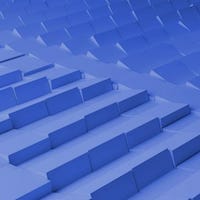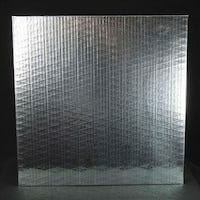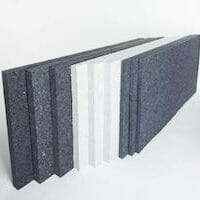Mineral Wool vs Fiberglass: Which is Better?
Let’s face it, the world around us isn’t getting any quieter. But one way we can try to control noise at home or on the job is by soundproofing a space with insulating materials, and there are many reasons to soundproof a room, office, or commercial workspace. For example, sound pollution is being taken more seriously as data shows how noise exposure can induce hearing impairment, hypertension, and even cardiovascular illness.1 Mineral wool and fiberglass are two of these manufactured soundproofing materials that can be used as thermal and acoustic treatments. However, like most choices, they both have certain advantages and disadvantages regarding which to use. Let’s take a closer look at each of these materials and compare mineral wool vs. fiberglass to help you choose the right product for your room acoustics or soundproofing project.
How Do Insulating Materials Provide Soundproofing?
To create a successful sound barrier, you’ll want to use a dense material that can deaden sound, preventing it from entering or leaving a room or building. The denser the material is, the more effective it will be because the sound is generally transmitted via the air. Compared to spray foam insulation and regular foam insulation materials, something denser simply contains less air. With these two materials, mineral wool is denser than fiberglass, but there are other considerations you should factor into your decision as well.
Mineral Wool
Mineral wool is a type of insulation material that refers to either rock wool or slag wool. Both are manufactured materials composed of either rock and stone or various metals. They undergo a high-heat process to melt the material down and turn it into fibers, which are spun to manufacture the “wool.” They’re then turned into large sheets coupled over one another. The final product is a mattress-like fibrous material, typically pale yellow or beige. It comes in a semi-rigid or compressed form. 
Mineral Wool Advantages and Disadvantages
Mineral wool provides inherent:
- Noise reduction
- Fire resistance
- Protection against fungi, mold, and bacteria
- Durability
However, you should also keep in mind the following before installing mineral wool. It’s:
- Heavy compared to other insulation materials
- Relatively expensive to purchase
Fiberglass
Fiberglass is another type of insulation material, but it’s made mostly from sand and glass. It’s fabricated via a manufacturing process similar to mineral wool. But, towards the end of its production, a polymer glue is sprayed onto it, which gives the fiberglass its classic pink, cotton-candy look.
Fiberglass Advantages and Disadvantages
Fiberglass is commonly chosen for insulation because of its:
- Easy installation (if no electrical boxes or other objects are between studs and joists)
- Fire resistance
- Cost effectiveness
- Light weight
- Wide availability
- Recycled sources
Still, fiberglass does have some drawbacks to take into account:
- Vulnerable to moisture, so it requires sealed batts or a protective barrier
- Heat insulation is less efficient and decreases as the material sags over time
Insulation Ratings
Before taking a closer look at a head-to-head comparison of mineral wool insulation vs. fiberglass, it’s important to explain some of the ways these sound insulation products are rated:
- STC rating – A material’s sound transmission class (STC) rating informs you of how much noise it can effectively block.2 Two sheets of ½” drywall separated by studs—or a standard interior wall—provides an STC of roughly 33, which may struggle to mute a normal conversation in another room. For further reference, the associated sounds will still generally be heard at the following STC values:
- 25 – Soft speech
- 30 – Normal speech
- 35 – Loud speech
- 40 – Loud speech (heard but not understood)
- 50 – Loud sounds will be faint.
- 60+ – Considered the minimum for true soundproofing
- IIC ratings – Not all sound is transmitted via the air; some is due to the vibrations caused by impacts. A material’s impact insulation class (IIC) rating will inform you of how effective the material is at stopping this type of noise.
- NRC ratings – Whereas STC ratings are used to demonstrate how much sound is blocked, noise reduction coefficients (NRCs) describe how much sound will be absorbed, which relates to minimizing acoustic effects like echoing.
- R-values – Unlike the other two ratings, R-values refer to a material’s temperature insulation properties. If you’re looking for soundproofing insulation that will be used for exterior walls, you’ll likely want to ensure it meets R-value recommendations for your climate.
Mineral Wool vs. Fiberglass Insulation: How The Soundproofing Materials Compare
Regarding each material’s soundproofing ability, most experts agree that mineral wool (also referred to as stone wool) is superior to fiberglass because of its greater density—and its higher STC rating as a result. Mineral wool has an STC rating roughly ranging between 45 and 52, which is the highest among insulation materials.3 Conversely, fiberglass’ STC is much lower. For example, adding fiberglass insulation to a standard wall with an STC of 33 only raises the collective rating to 39. So if the other considerations below aren’t a factor in your decision, mineral wool may be the best material for soundproofing office spaces or other commercial venues.
Installation
Rockwool and Fiberglass are relatively easy to install, assuming you have suitable protective gear and tools. Both come in batts, sheets, and loose-fill forms. The advantage of fiberglass during the installation process is that it’s lightweight and requires less muscle work. With that being said, the higher density of rock mineral wool makes it a bit harder to yield, but it also allows for more exact cuts, especially around those electrical boxes, pipes, or other objects during installation. In contrast, precisely cutting the fluffier fiberglass material can be pretty tricky—and especially messy. Crucially, you should always remember to wear suitable protective gear when working with mineral wool or fiberglass. Both contain tiny particles that can easily and quickly come into contact with your skin or lungs. If they become embedded in your skin, they can cause rashes, itching, or severe irritation; if swallowed or inhaled, they can cause a variety of lung problems. So remember to wear gloves, goggles, a facemask, and long sleeves when installing either of these materials.
Durability
Over time, mineral wool tends to maintain its structure better than fiberglass; it will not settle and sag within walls like fiberglass. As a result of fiberglass slumping, its effectiveness at blocking sound and changing temperature decreases over time. Moisture is another durability concern with fiberglass, as the material can deteriorate if the batts aren’t sealed or a vapor-proof barrier isn’t used. Plus, due to the intense heat that mineral wool batts undergo during their manufacturing process, all of the organic material is eliminated, which makes it resistant to fungus, mold, and bacteria. While fiberglass is mold-resistant on its own, the fluffy construction leads to increased air transfer, and organic particles can become trapped.4
Cost
People will often choose fiberglass over mineral wool because it’s much cheaper and still effective. On average, mineral wool can be anywhere from 20% – 50% more expensive than fiberglass.3 This is mainly due to the substantial manufacturing process mineral wool undergoes. And the cost is a major factor for many, as evidenced by the insulating material’s sheer popularity in American homes. A 2019 study reported that 71% of all new single-family homes regulate sound and temperature with it—52% using batts and 19% using blown fiberglass.4
R-Value and Heat Insulation
Compared to fiberglass batts, mineral wool batts offers superior insulation and has about a 22-37% higher R-value per inch. For commercial settings, the higher cost of soundproofing with rockwool insulation may be offset by the thermal regulation it provides, helping to reduce heating and air conditioning bills. However, if you’re looking to insulate a large facility (e.g., a warehouse), the amount of insulation required may significantly increase the project’s cost.
Fire Resistance
Mineral wool and fiberglass are both fire-resistant and non-combustible materials. Still, mineral wool has a greater melting temperature than fiberglass and provides better fire resistance, which is why it’s preferred in most exterior installations and used as a method of passive fire protection and control. If your building is located in an area known for wildfires, that extra bit of protection may make it worth choosing mineral wool.
Environmental Impact
A percentage of mineral wool and fiberglass are made from recycled material, but mineral wool contains 70% recycled material, making it a greener product than fiberglass at 20-30%.3 But with that said, neither is biodegradable. So while they may reduce their ecological footprint as a result of being made with recycled materials, this factor decreases their sustainability merits.
When Should I Use Mineral Wool or Fiberglass?
Based on our comparisons above, mineral wool is a far superior product in many ways. It has a higher STC rating, R-value, and melting point. But a significant drawback for many is its cost. Mineral wool is also a lot heavier, so it’s worth considering if you’re planning a DIY project at home and plan on using mineral wool, especially to insulate a ceiling or roof. There are many cases where using either material would get the job done and done well. But there are exceptions and situations when one is better than the other. For example, mineral wool is much more commonly used on exterior installations, primarily because of its hydrophobic quality. Fiberglass is more widely used on interior installations, such as walls, attics, basements, and garages. But whichever you choose, both are great products and, if installed correctly, will be a great addition to any space.
Acoustical Surfaces: The Pros for all of your Soundproofing Needs
Whether it’s using mineral wool, fiberglass, or any of our other top-of-line soundproofing products, Acoustical Surfaces has you covered. For over 35 years, we’ve been leading the way by creating acoustical solutions for residential, commercial, and industrial spaces. Whether it’s treating a door, window, room, or an entire office space, we have solutions for jobs of all sizes. We specialize in everything from soundproofing the ceiling in your New York City apartment to large warehouses and plants, where heavy machinery, conveyor belts, and HVAC systems play a huge role in noise pollution. If you have noise problems, we have sound solutions. Contact us today to get started! Sources:
- Environmental Health Perspectives. Noise exposure and public health. https://ehp.niehs.nih.gov/doi/10.1289/ehp.00108s1123
- Science Direct. Sound Transmission Class. https://www.sciencedirect.com/topics/engineering/sound-transmission-class
- Green Building Advisor. Mineral Wool Insulation. https://www.greenbuildingadvisor.com/article/mineral-wool-insulation
- Rise. Fiberglass Insulation: A Complete Guide. https://www.buildwithrise.com/stories/fiberglass-insulation
- Indiana Mold Remediation. Mold & Home Insulation: Here’s What You Need to Know. https://indianamold.com/mold-remediation/mold-home-insulation-heres-what-you-need-to-know/
- Department of Energy. Insulation. https://www.energy.gov/energysaver/insulation






